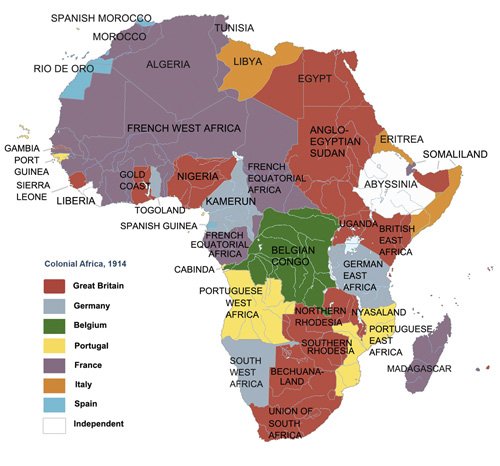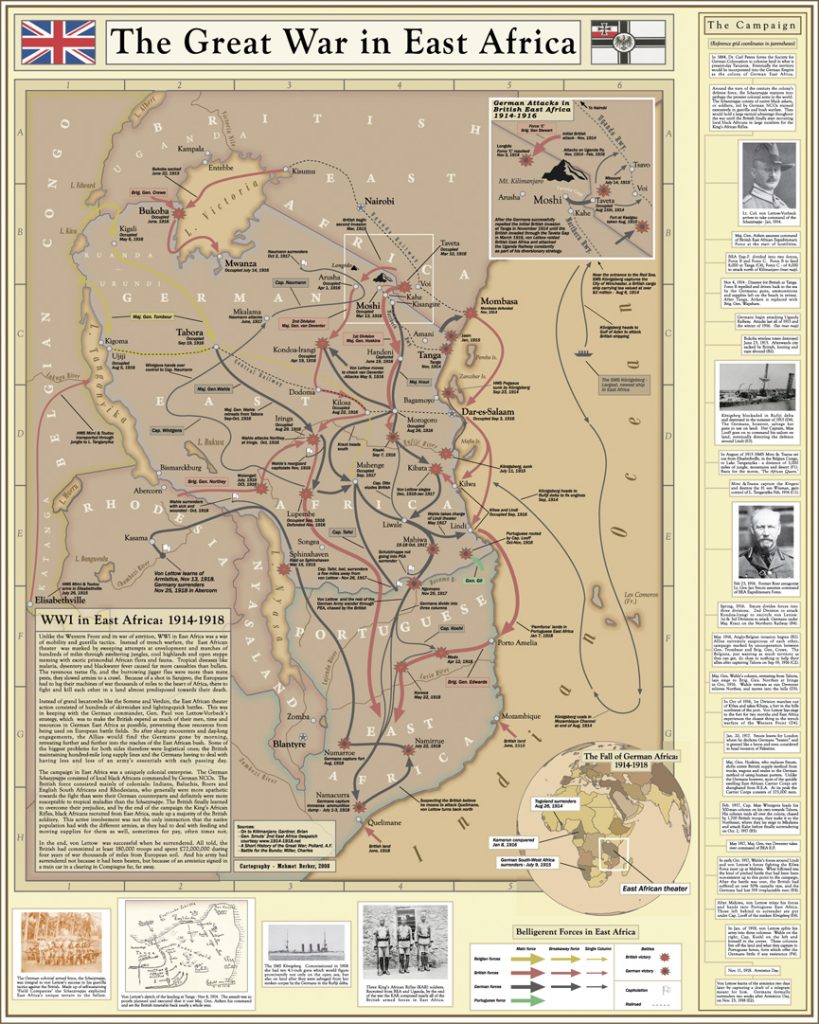WWI in Africa
Sally Wilson
At the turn of the 20th century, Africa was an important continent for many European powers with colonial possessions. When war broke out in August 1914, Belgium, Portugal, Great Britain and Germany all had significant interest in Africa that they wished to protect. Initially war in Africa seemed unlikely as the 1885 Berlin Act excluded the colonies of the Congo Basin from “universal war” and neither Germany nor Britain had significant troops in their colonies.

Conditions in Africa were harsh; either the heat was scorching and there was no water or there were torrential rains that rendered movement impossible. Even under good conditions advances were difficult due to the lack of railway lines and roads. Huge numbers of African porters were needed to transport military equipment and supplies. Rations were meagre, disease was rampant and the wildlife dangerous.
At the outset of the war Britain and Germany had a similar number of troops in Africa. The majority of the troops were native Africans with some European officers. Britain had 17 companies of the King’s African Rifles (KAR) comprising approximately 2,400 officers and askari (native soldiers) while Germany had 216 officers and 2,540 askari3.. As the war progressed Britain brought in troops from India and South Africa considerably enhancing their forces. Although vastly outnumbered, Colonel Paul Emile von Lettow-Vorbeck, the leader of the German forces, was able to fight defiantly and did not capitulate until after the Armistice was declared.
Although the war in Africa was often viewed as a sideshow to the action in Europe, the loss of life was significant. Approximately 9% of the serving troops, about 11,000, perished in Africa, two-thirds from disease; however, this pales in comparison to the death toll suffered by the African porters. Estimates put this number at close to 95,000. 4.

